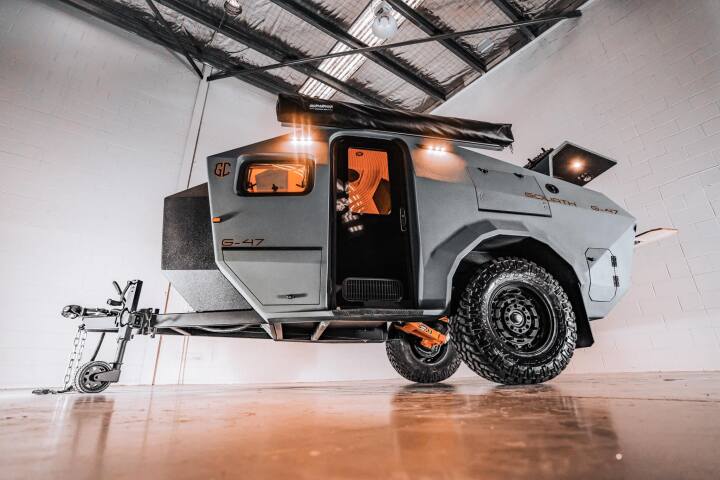Wind turbines are a good source of renewable energy, but they typically incorporate heavy-duty towers – thus making them permanent structures. The new Wind Catcher, however, is designed to be lightweight and portable.
Reportedly tipping the scales at just 10 kg (22 lb), the Wind Catcher is manufactured by Danish startup KiteX, which previously brought us the Vaavud smartphone-mounted wind speed meter. The company's new device was inspired by two things – kiteboarding kites and kite-like airborne wind turbines.
According to KiteX, the Wind Catcher can be set up by one person within about 15 minutes. The device is made up mainly of interlocking glass-fiber rods, recycled plastic and EPS foam. It's supported by three guy wires that are each attached to cam buckle nylon straps, which are in turn anchored to stakes driven into the ground.
Once fully assembled, the Wind Catcher has a turbine diameter of 4 meters (13.1 ft), and an uppermost reach of 6 m (19.7 ft). And although users could utilize the electricity right as it's being generated, the idea is that they will store it in a hard-wired third-party power pack for later use.

The whole system could be utilized either at an off-grid setting such as a campsite, or at the user's own energy-efficient home. When overly-powerful wind storms are in the weather forecast, the setup is simply taken down.
KiteX is offering two versions of the Wind Catcher – one produces 200 watts starting at a wind speed of 5.5 meters per second (18 ft/s), while the other produces 600 watts at 7.5 m/s (24.6 ft/s). The former is recommended for powering items such as laptops, small fridges or a few lights, while the latter is aimed more at applications such as the charging of ebikes or the running of power tools.
Should you be interested, the Wind Catcher is currently the subject of a Kickstarter campaign. Assuming it reaches production, a pledge of DKK 7,390 (about US$1,182) will get you the 200W model, with DKK 10,995 ($1,758) required for the 600W version.
There's more information in the following video.
And for examples of smaller, lower-output portable wind turbines, check out the Waterlily, Trinity and WindPax.
Sources: Kickstarter, KiteX







